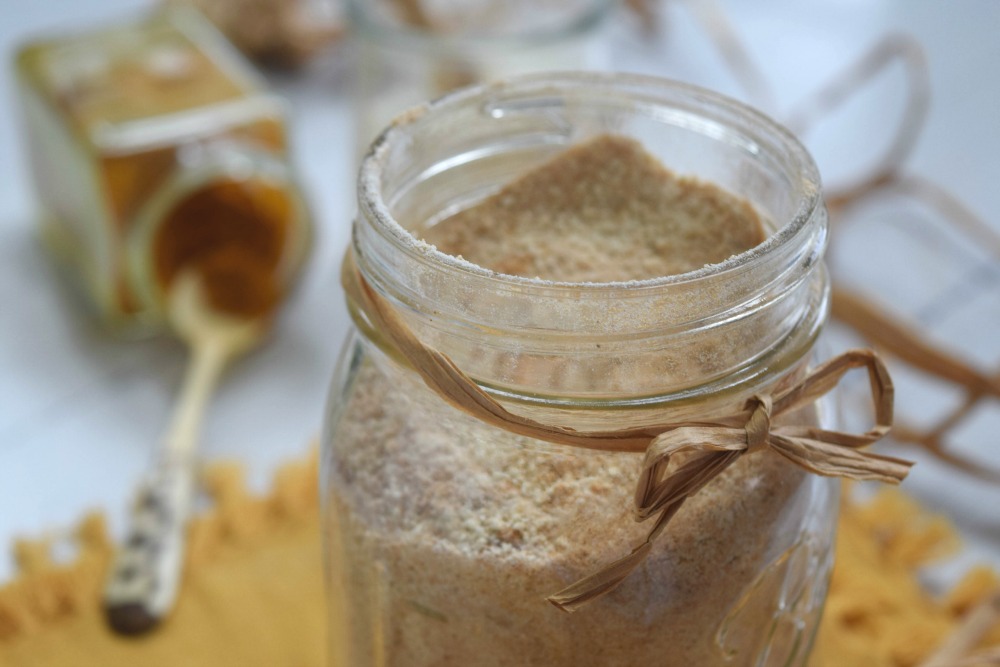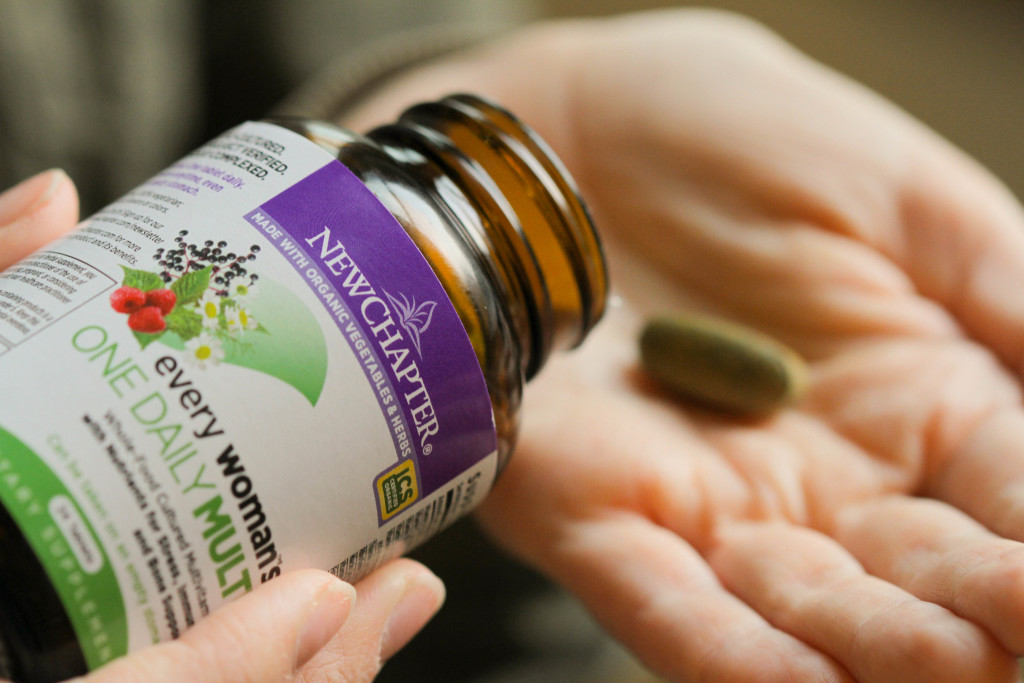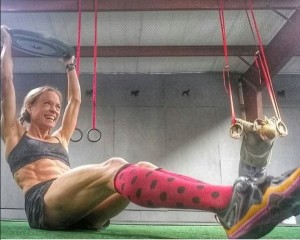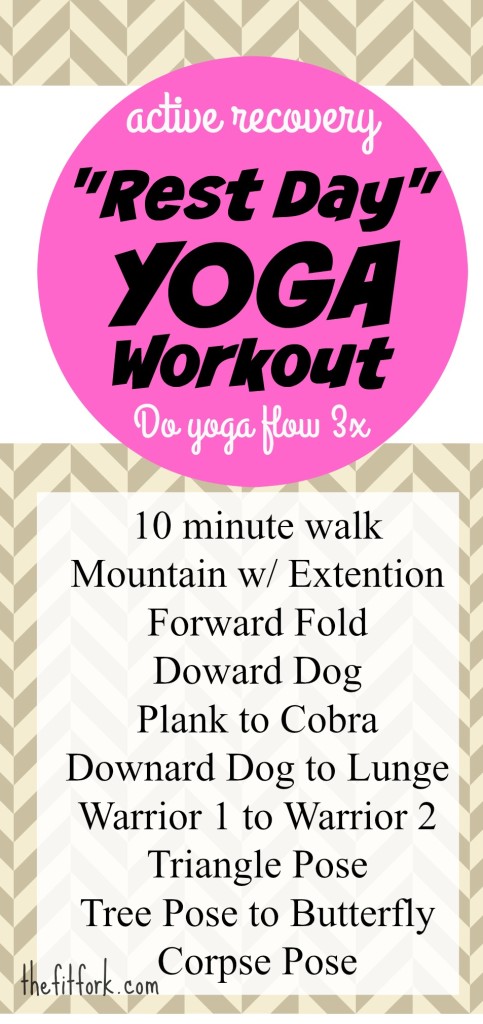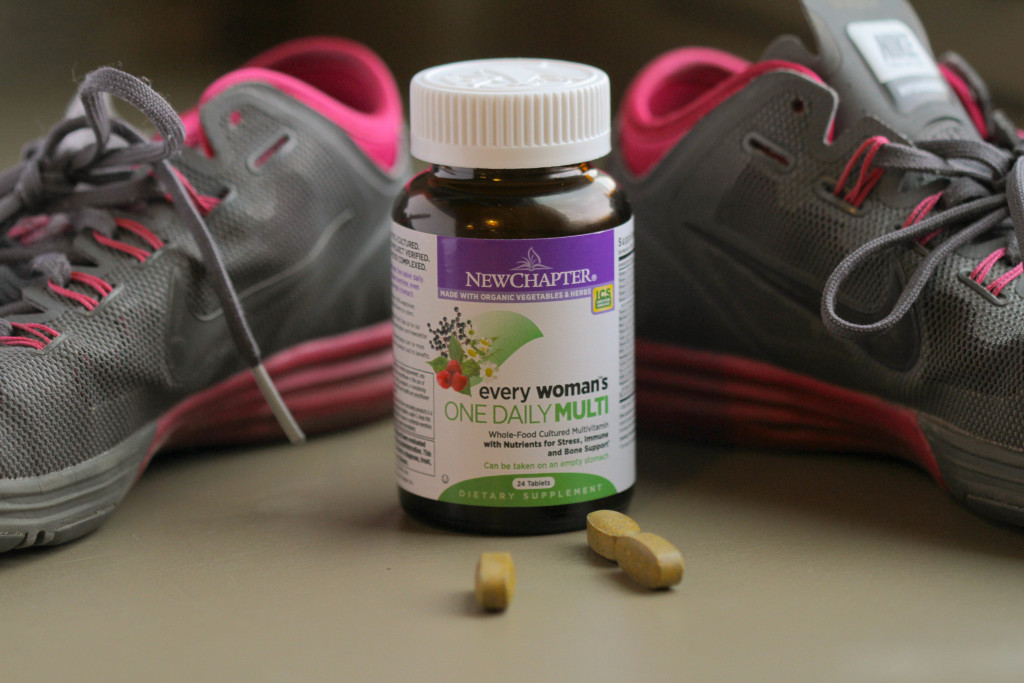![]()
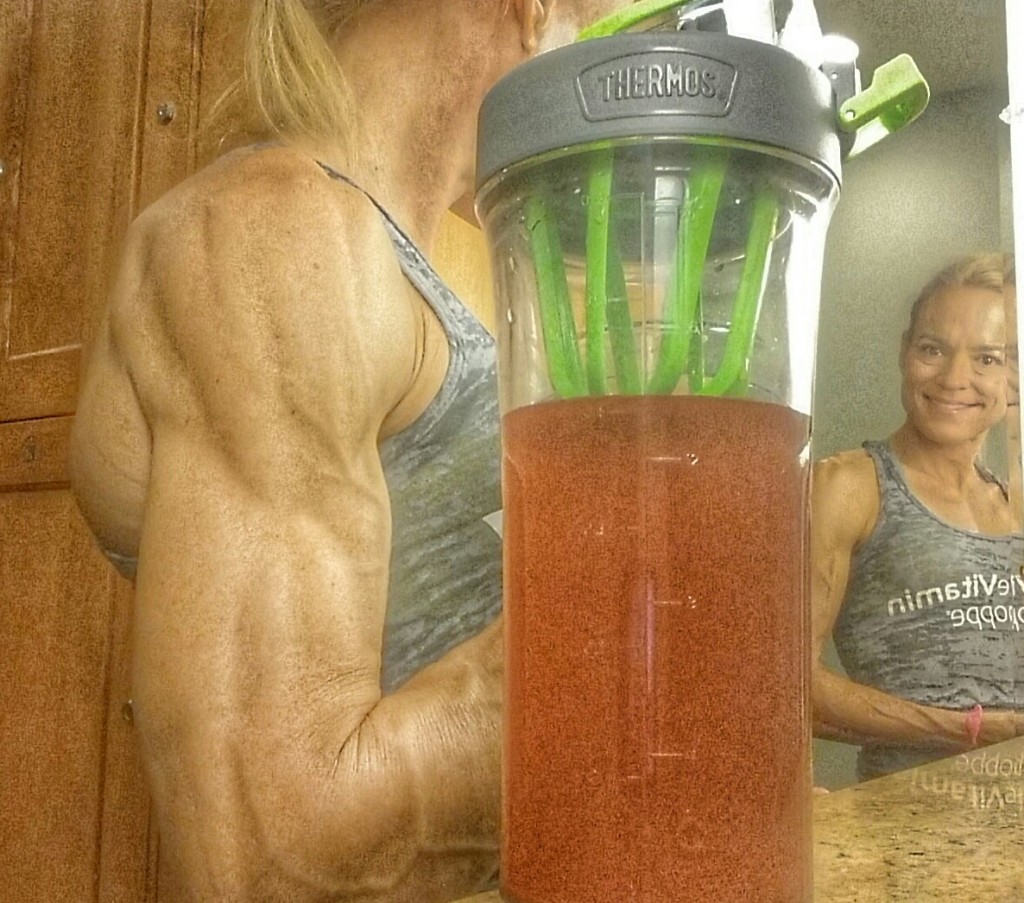
Before I get on my soapbox about protein, let me tell you this post is sponsored by Genuine Thermos® Brand Shaker Bottle. Of all the shaker bottles that have come and gone (quickly) my life, this one is a keeper and hands-down the best! It’s made of safe materials, shatter-proof (important if you’ve seen some of my workouts), and resistant to leaks – the lid screws on tightly and there is actually a push-button release cap on the spigot!
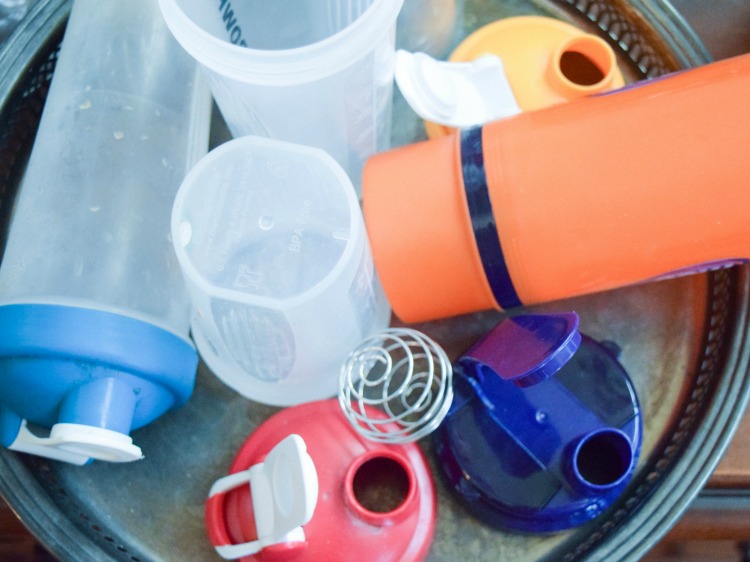
Breaking up with these old shaker bottles wasn’t hard to do!
As one whom has spilled time and time again, over the front of my shirt, on the car upholstery and all inside my gym bag, this “leak proof” feature is a huge selling point with me. Anyway, Thermos® is holding a giveaway for 10 of these very-impressive vessels – go here to enter! And read down to the bottom of the post where I have more deets on this must-have nutrition gear for the athlete. Now, onto the protein . .
PROTEIN TIMING FOR ENDURANCE ATHLETES — RUNNERS, TRIATHLETES, SWIMMERS, ULTRA MARATHONERS, OBSTACLE COURSE RACERS, MOUNTAIN BIKERS, ECO ADVENTURE TYPES, MUD RUNNERS, ROWERS, SKIERS — I’M TALKING TO YOU!
Timing IS everything, especially when it comes to protein and the endurance athlete. Not only does adequate protein consumption provide sustained energy for the day’s routine activities, it helps to rebuild muscle taxed by strenuous exercise, and makes it easier to maintain a lean body mass, even as we age. I’m excited to share with you what I’ve learned over years of listening to and working with various experts on the topic and sharing the personal protein strategy I use to keep a low body fat percentage and fuel my performance as a runner and obstacle course athlete.
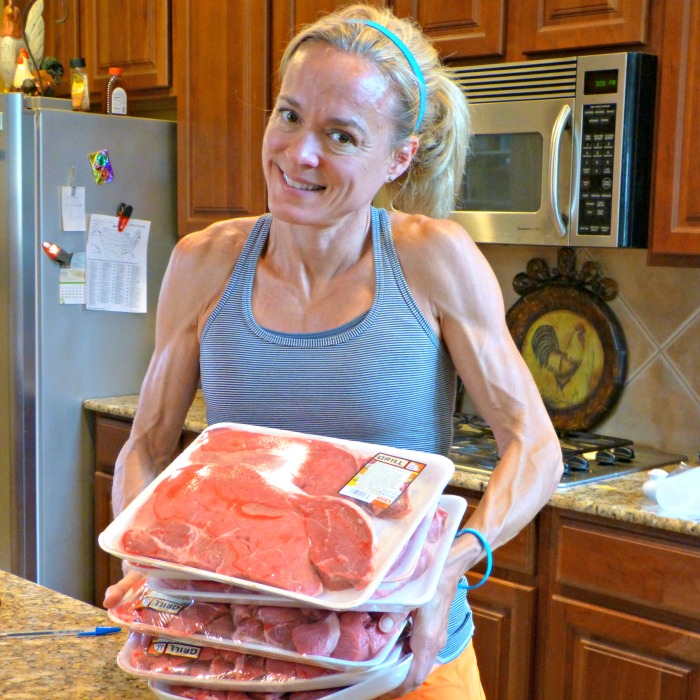
What? Is this too much protein for one meal?
How much protein is enough or too much and how much do you eat? I get this question all the time. The Recommended Daily Allowance (RDA) for protein is 0.8 grams of protein per kilogram of body weight, or 0.36 grams per pound – that’s about 56 grams per day for the average non-active man or 46 grams per day for the average non-active woman. This RDA calculates out to about 10% of suggested daily caloric intake. You might be surprised to find out that the 45 to 56 g protein just mention is the equivalent of 6 to 8 ounces of a lean animal-based protein like chicken, fish or beef! However, the modest RDA was set a long time ago, during a time food rationing during war, and is widely considered by most nutritionists to be the minimum amount needed to keep from becoming malnourished and sick! Today’s Dietary Guidelines for Americans suggest that we should be taking in from 10% to 35% of daily calories from various forms of protein, depending on our needs and activity levels.
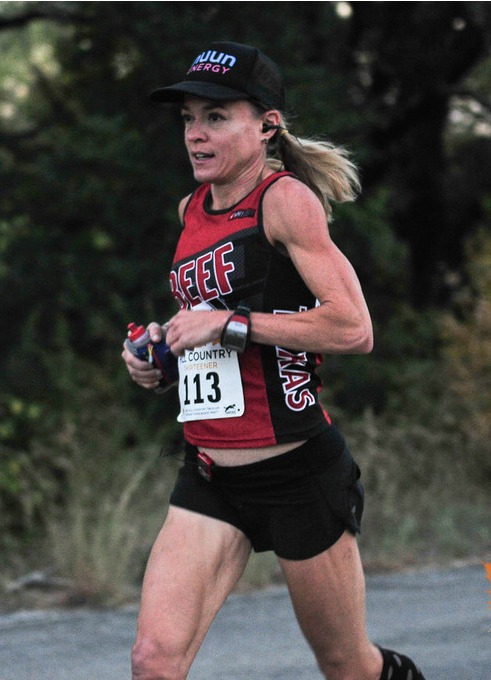
Endurance athletes like marathon runners and triathletes need more protein than the average couch potato, and calories as well. Our busy bodies need protein to more efficiently process carbohydrates into quick fuel and to rebuild (and even grow) muscle. You can’t really eat too much protein, many dieters have had success on a high-fat, higher protein Keto diet. However, when it comes to protein, there is a point of diminishing returns for an athlete. Remember, the body can only process about 25 – 30 grams per meal or snack, regardless of your body size. Plus, when you up calorie intake from protein, proportionately speaking, calories from other areas have to give — unless you want to gain weight. Plus, training high mileage with few carbs leaves you feeling sluggish and like you’ve got lead in your legs (trust me, I’ve tried). Even the author of fruit and grain-shaming The Paleo Diet broke down and admitted, in a the later-published The Paleo Diet for Athletes, that there is a need for certain carbohydrates in a training diet if optimal performance is the goal.
When should I eat my protein? I’ve seen some people talk about “front loading” protein in the morning to start of the day. Yes and no. Yes, you definitely should be eating protein right upon waking up. Muscles need to be fed; they’ve been in a complete fasting state for the last 8 hours or since the last meal. However, you don’t need more than 25 – 30 grams as previously mentioned; it won’t do you any good (unless you’re just eating it for taste or gains!).

Start your day with 25 – 20 grams of protein!
Get my Barn-raiser Egg & Beef Bake recipe (above) which has been featured in Taste of Home magazine and on the Hallmark Channel “Home & Family Show”
The optimal plan for protein intake is to space it evenly throughout the day. Americans tend to “back load,” that is, eating it mostly at dinner! A basic breakdown consists of protein at breakfast, lunch, dinner and possibly a post-workout snack and bedtime snack, depending on your needs. For super intense workouts, you may also consider protein intake with your carbs during actual exercise – protein helps to more quickly process carbs in the blood stream.
Most of us endurance athletes know by now that the optimal window for protein intake after a workout is within about 30 minutes, 60 minutes worst case scenario. Experts suggest that the carb to protein ratio of this recovery snack be 4g carb to 1g protein or 3 to 1. So remember to bring along a protein bar, shake, nuts or some other protein-rich snack that can be consumed almost immediately after your sweat session.
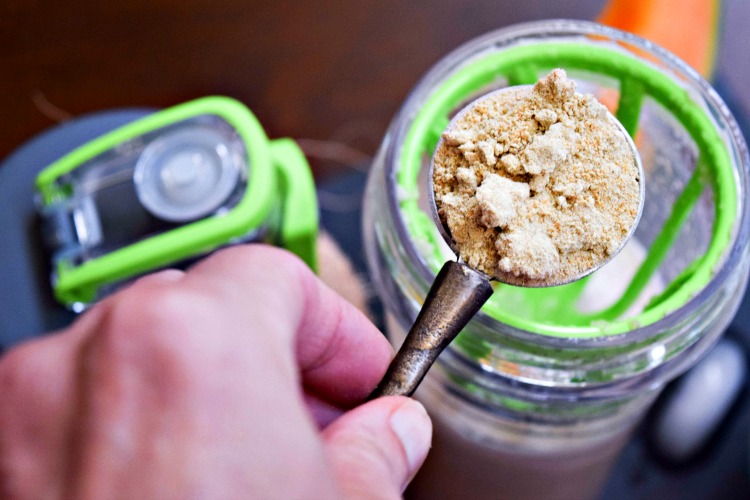
Now, onto the bedtime snack. I eat from lights on to lights out! Eating before bed goes against the very rules of what your mother taught you. Curiously, I’ve always craved a protein snack about hour before my head hits the pillow – and was happy to find out I was actually doing my body a positive service. Much of our recover and muscle growth happens at night and it needs long-lasting fuel to do so. Experts say that dairy-based protein snacks are the best picks at night. Apparently, specific enzymes in dairy foods maximize the work load protein. That means my nightly Greek yogurt (or a protein shake made with milk) is a post-dinner winner!
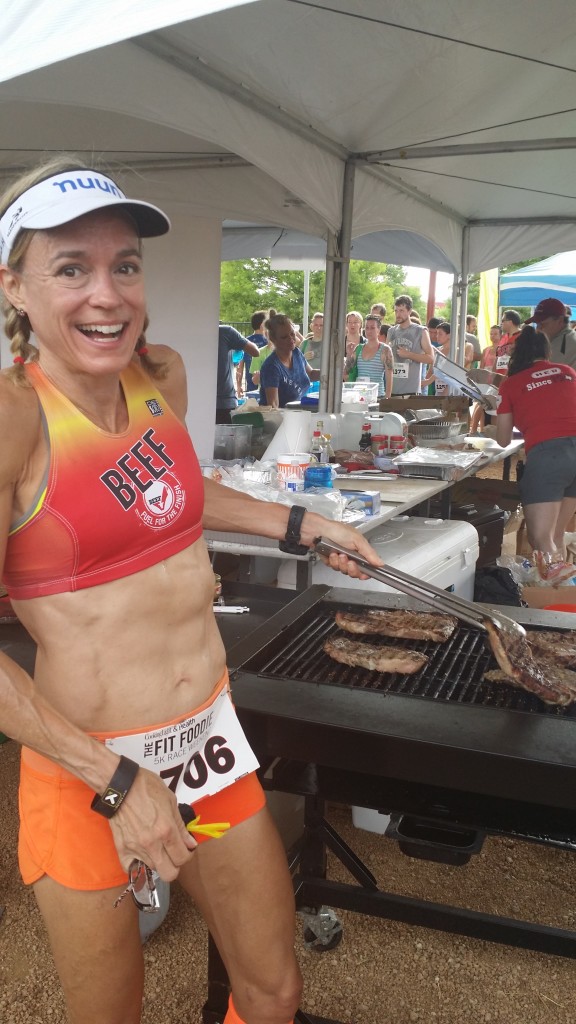
A Fairly Common Protein Day for ME (Remember, it may vary for you):
- Breakfast: 30g protein from eggs, mug muffin made with protein powder, or smoothie
- Post-Workout Snack: 20g protein bar, peanut butter toast, protein powder and fruit shake
- Lunch: Salad with 30g protein from mixture of leftover meat, beans, etc.
- Dinner: 25g protein from protein like sirloin steak, chicken breast, salmon with veggies on the side.
- Bedtime Snack: 20g protein from plain Greek yogurt mixed with stevia and sprinkle of granola.
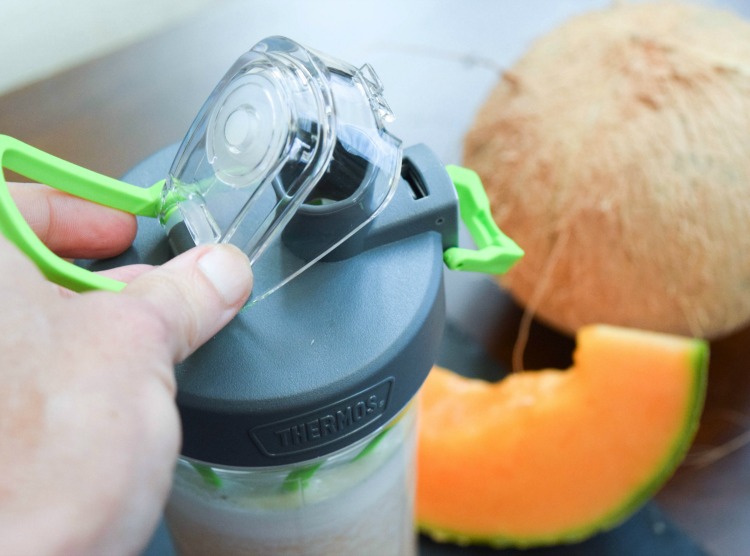
The Thermos Brand Shaker Bottle doesn’t leak thanks to the push-button release cap!
So, back to the Genuine Thermos® Brand Shaker Bottle, its ideal for those protein shakes I’ve been mentioning for breakfast or post-workout recovery. Again, I love the leak-proof design, but also another feature that’s awesome about this shaker bottle is that it features an integrated yet removable stationary mixer that helps evenly blend beverages – no one wants to gag on unexpected protein clumps! Also, I really appreciate the capacity markings along the side of the bottle – it helps me make my protein drink recipes without having to haul out measuring cups. Plus, it also keeps me aware of how much I’m drinking or not drinking, as the case may be! Many times I need to see those tick marks reveal to know I’m staying hydrated and getting enough calories/protein for recovery.
Specs for Genuine Thermos® Brand Shaker Bottle : It sells for about $14.99, holds 24 ounces, is clear with a gray/green lid, and measures 3.8” W x 3.4” D x 9.2” H (and, yes, it fits in my car’s cup holder). Plastic is BPA-free, impact-resistant and impervious to absorbing odors of flavors from past beverages. And (yay), its dishwasher –safe!

Enter for chance to be one of ten randomly selected winners of in the Genuine Thermos® Brand Shaker Bottle Giveaway! Head over to the Thermos® Facebook page for entry details.
And, don’t miss out on a thing – follow Thermos® on Facebook, Twitter, Instagram and Pinterest for exclusive updates and product information.
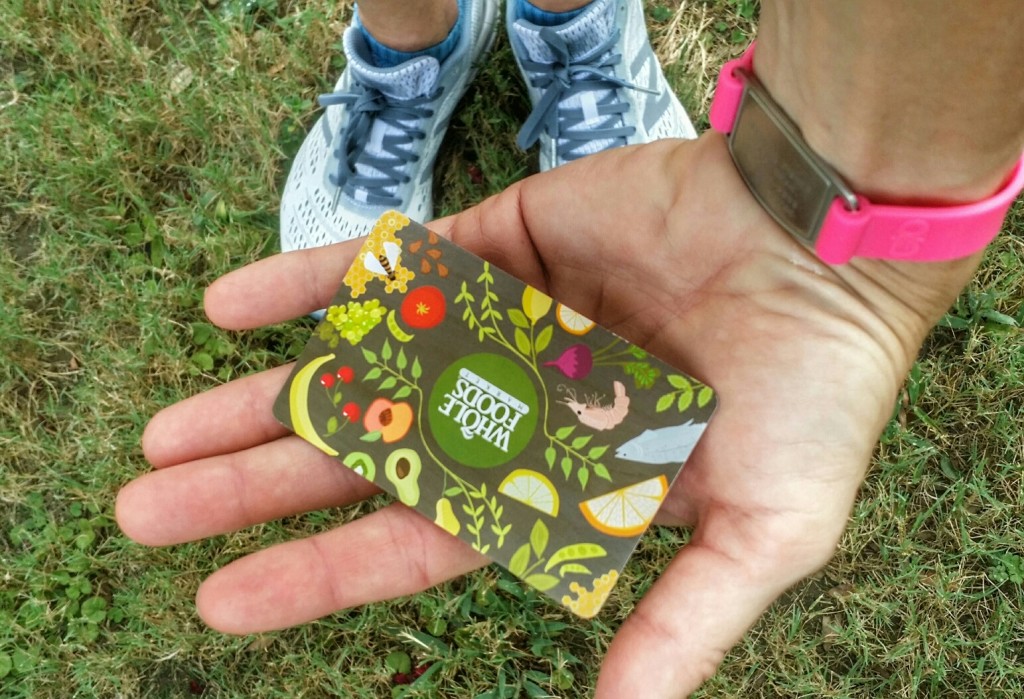 Additionally, I’m personally hosting a giveaway for a $25 gift card to Whole Foods so you can buy some yummy, nourishing ingredients to put in your ShakerBottle
Additionally, I’m personally hosting a giveaway for a $25 gift card to Whole Foods so you can buy some yummy, nourishing ingredients to put in your ShakerBottle
a Rafflecopter giveaway
